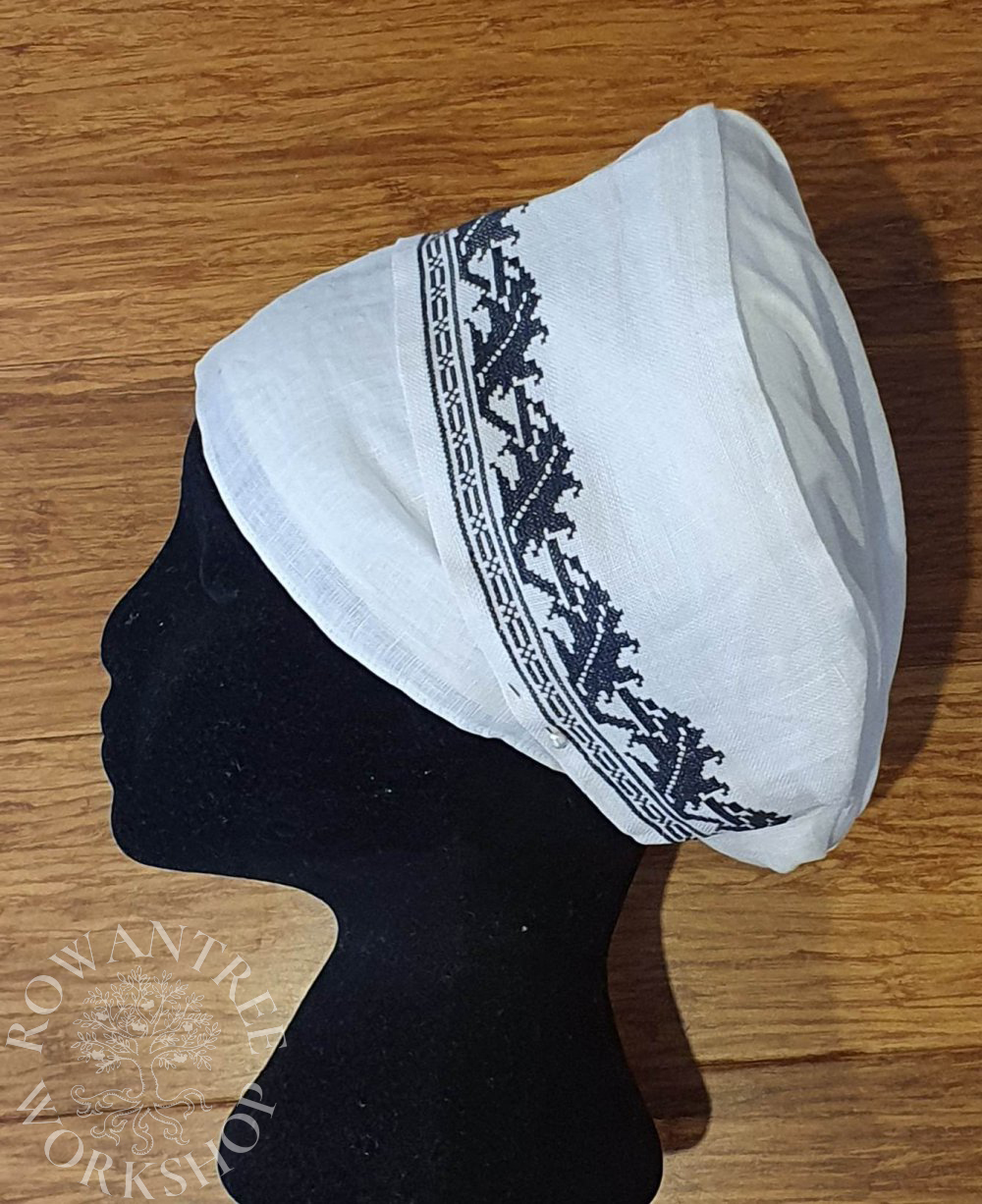Another embroidered Steuchlein for my early 16th century German wardrobe.
I was pleased with my first attempt at this style, but I wanted to make another, with more elaborate embroidery.
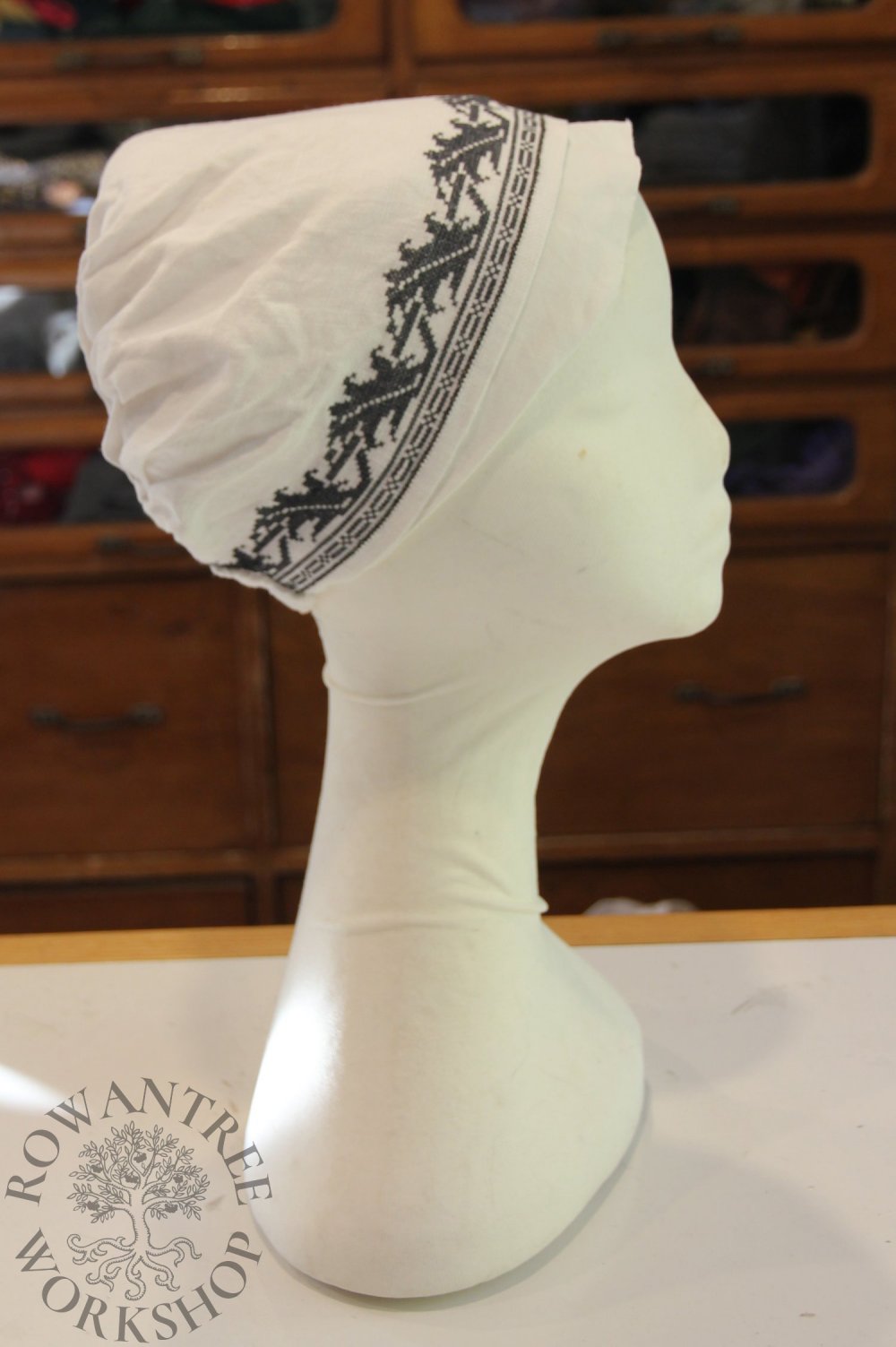
Research and Design
Decorated headwear is associated with Burgher (middle class) married women – the sumptuary laws of the early 16th century forbade the use of decorated veils by Bauer (farmer) women.
There are many examples of embroidered headwear from early 16th century Germany, usually in the form of a band along the front edge, framing the face. Textiler Hausrat (1990) notes that most women had both plain and decorated versions to wear, with bands of gold or embroidery.
These examples show more elaborate embroidery than the previous set:
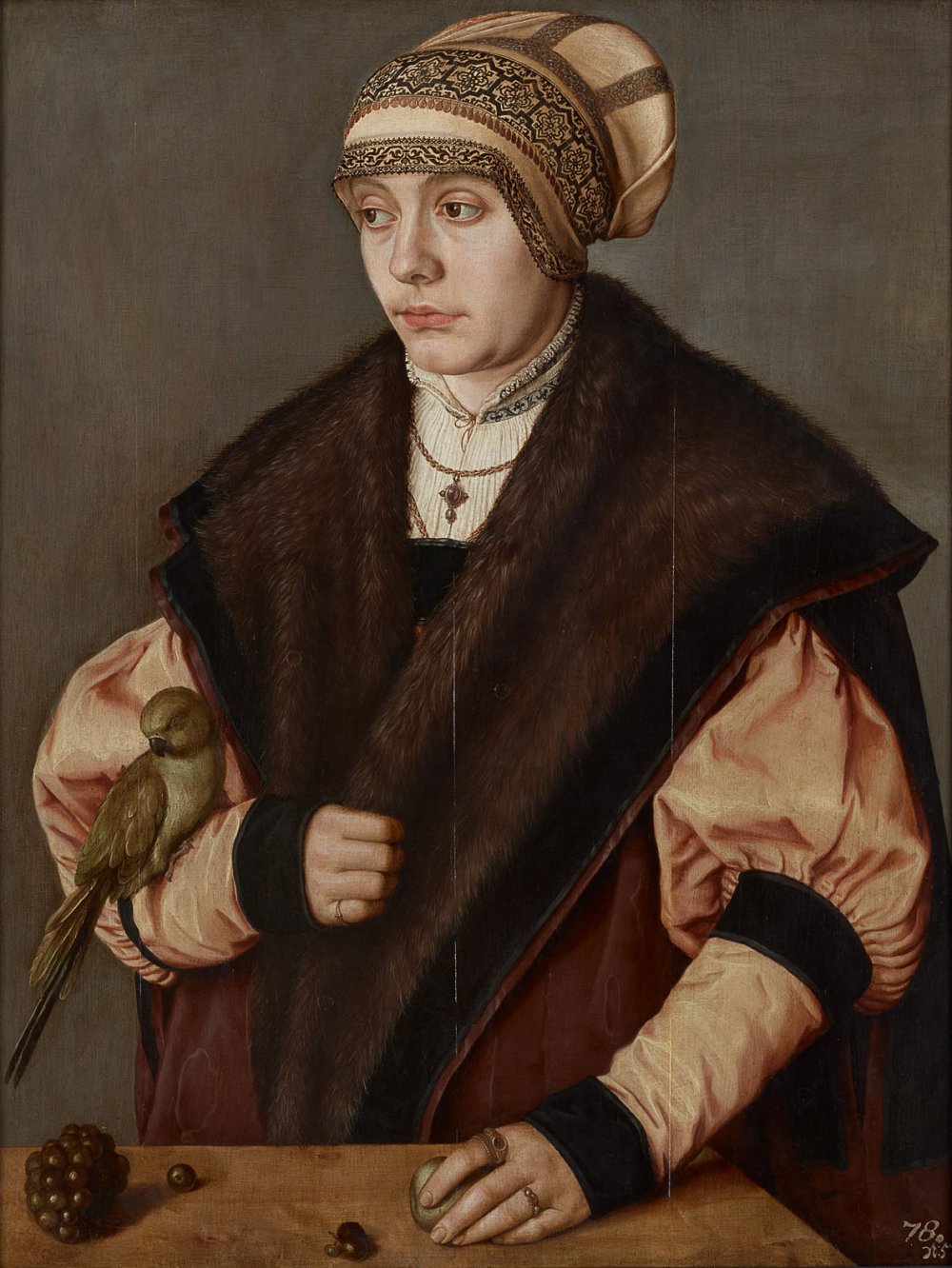
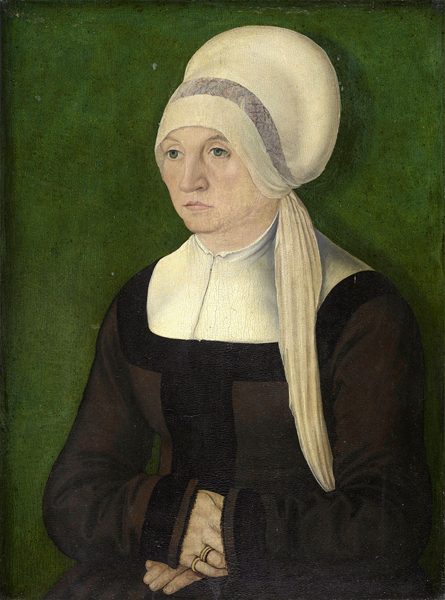
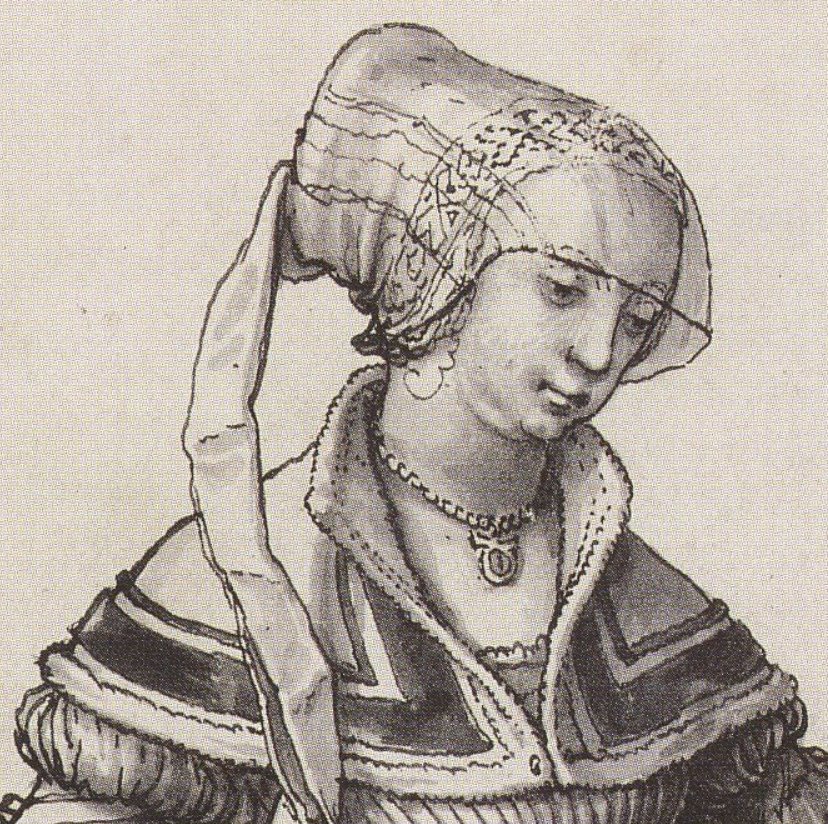
This time, I wanted to make a Steuchlein which was gathered into the back. I still had not understood the layered construction, so I planned to make this as a constructed piece, with the pleats sewn in.
For the embroidery, I wanted something larger that the previous delicate edge. At that stage I had no access to the German modelbooks, so I used a pattern from Nicolo Zoppolini’s Universali 1537, which looked appropriate (Evans 1988), combined with a simple band design.
It is clear that Zoppolini’s work was based on one or more German modelbooks, although the scrolling leaf design it does not appear in the examples examined in German Modelbucher (McNealy 2018). However the ‘scroll and band’ is a common aesthetic seen in several of Schönsperger’s modelbooks.
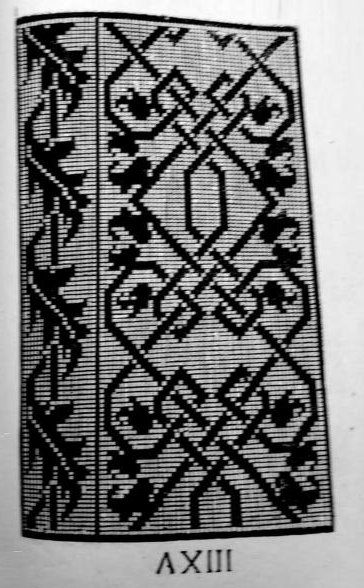
Source: Internet Archive
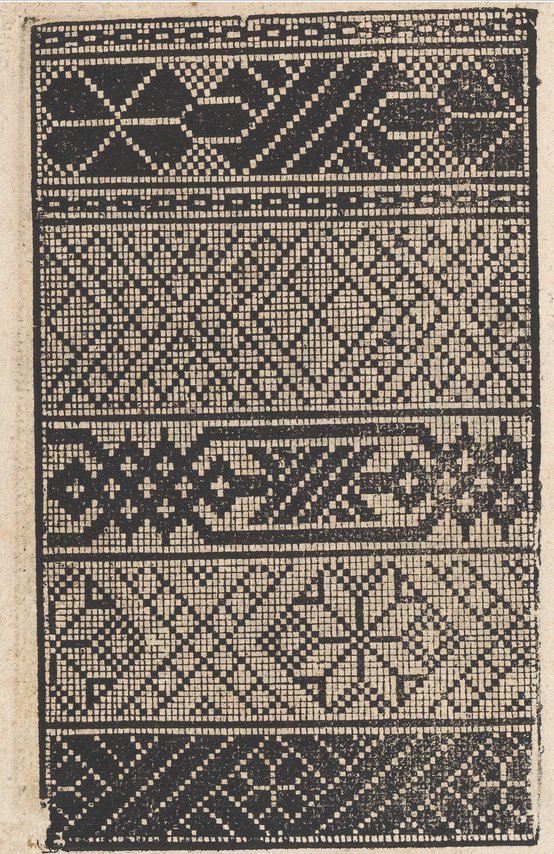
Source: The Metropolitan Museum

Source: The Metropolitan Museum
Construction
I wanted more structure than my previous Steuchlein, so I made a linen cap with a padded roll, to counteract my short hair. I based the design on the Haube I made some years earlier, which fit well. I put the cap on my headform and draped and pinned fabric to draft the pattern, before cutting in linen.
I worked the embroidery on 32 count linen, in long-armed cross stitch using Madeira black silk thread, worked in the hand. I hemmed the front edge before pinning back onto the headform, so I could pin the pleats at the back. I sewed the pleats in place at the back, trimmed and finished them off inside.
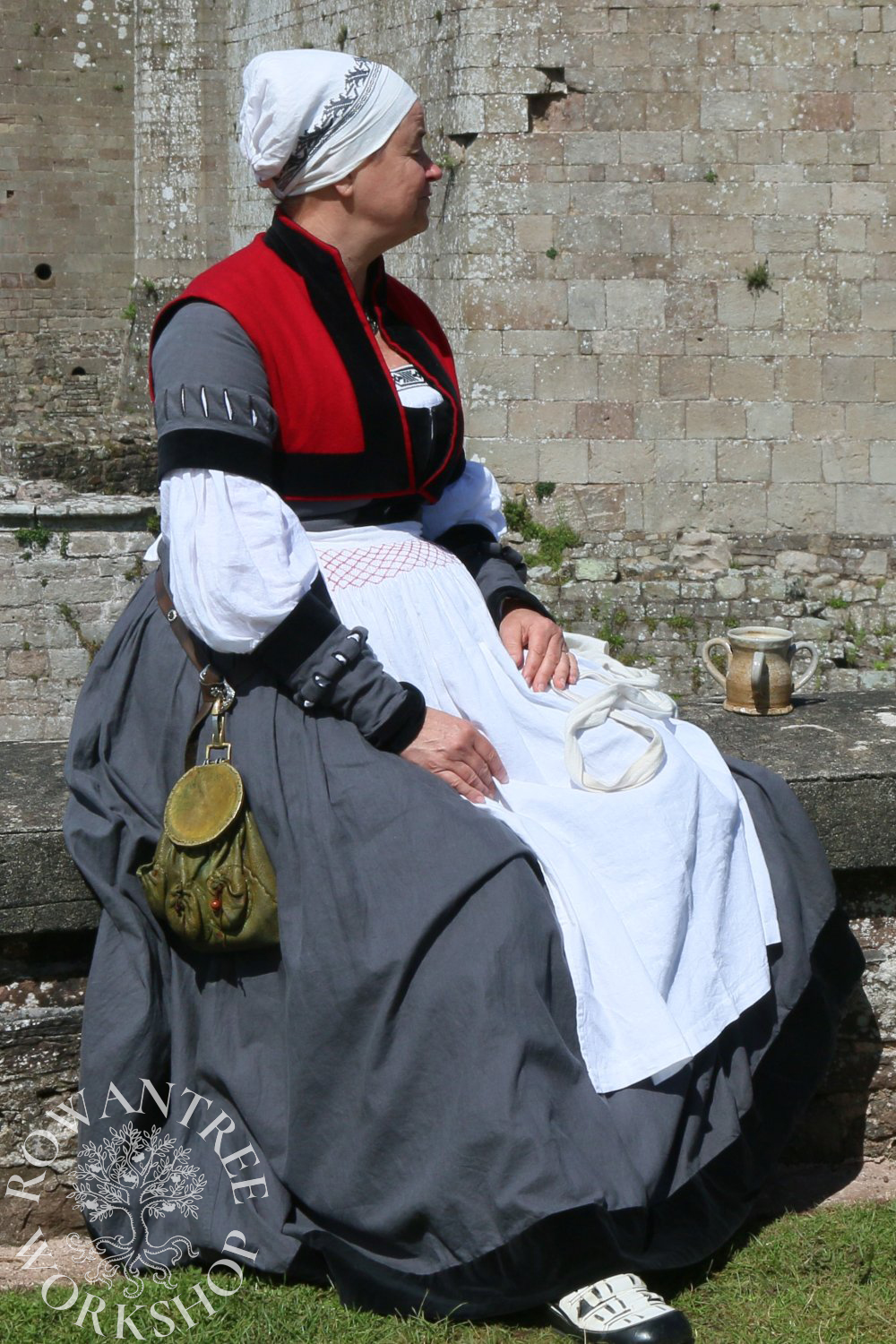
Photo: Jeremy Gregson
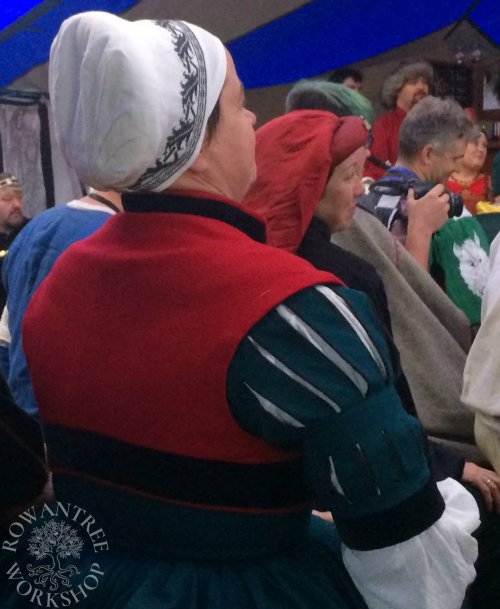
Photo: Brooke Perkins
Afterthoughts
Although I made this to go over a padded cap, I then did a major re-think on on the whole Steuchlein structure – with a solid Wulst and flat linens. The pre-made ‘cap’ approach did not work so well over the larger Wulst, but I continued to wear it for some time.
Although I loved the embroidery, the cap itself was a pain to wash and iron and did not really sit properly over the new Wulst. I decided to retire this headwear, but keep the embroidery.
I cut the embroidered strip off, filled in the embroidery on the corners (covered before, so they were not worked) and hemmed it all around to use as an addition to a plain Steuchlein, as seen in this medal of Elizabeth Kreler. It works so much better!
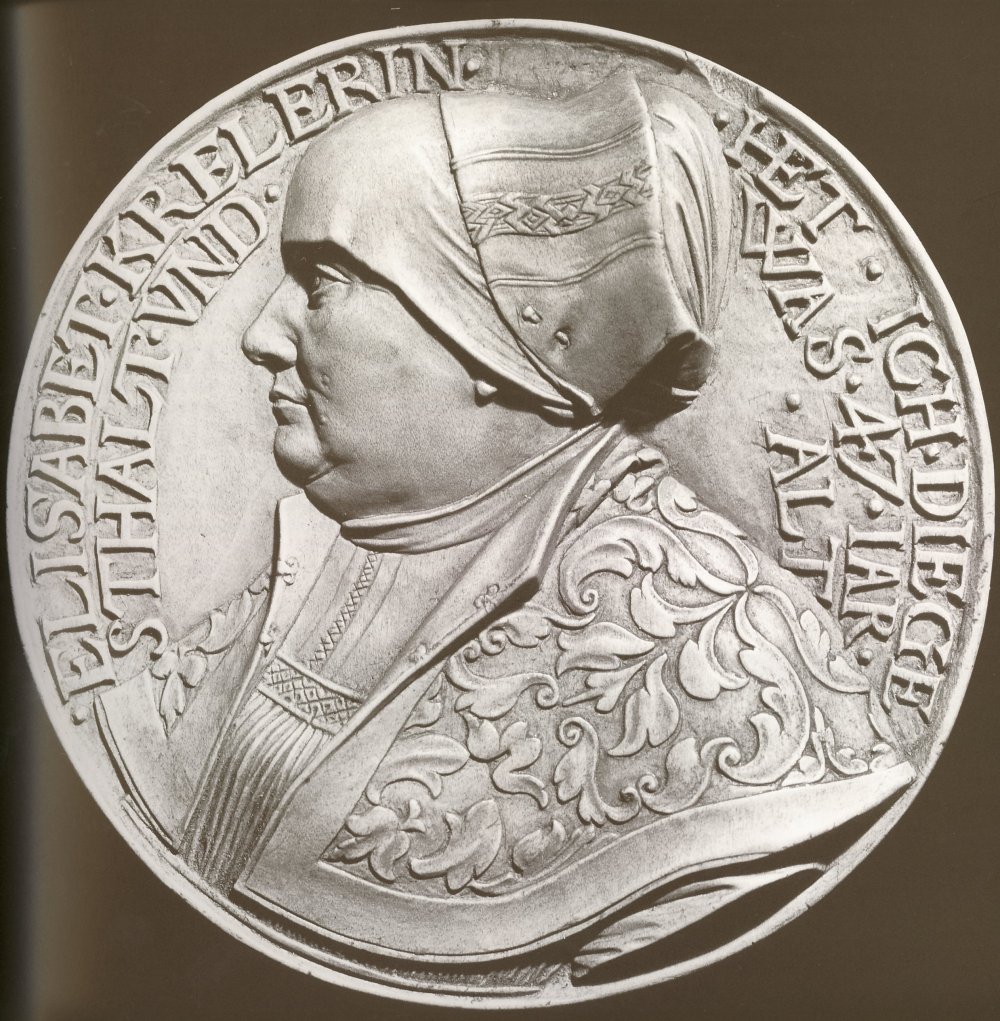
Source: National Gallery of Art
